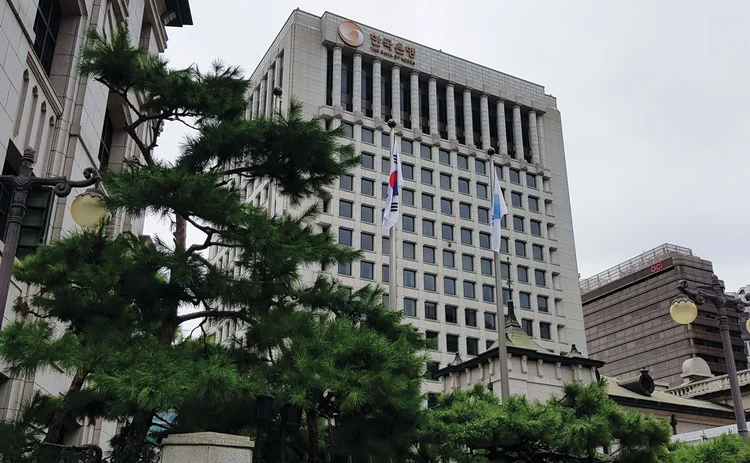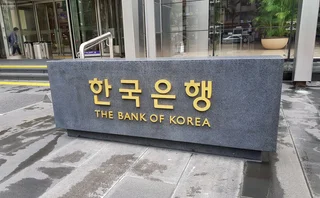
Reserve manager of the year: Bank of Korea
South Korean central bank has revamped its reserve operations

The Bank of Korea (BoK) had close to $390 billion in foreign exchange (forex) reserves at the end of 2017, held to guard against portfolio outflows or other risks that could have a negative effect on the South Korean economy. But holding such high levels of reserves – the ninth highest in the world – comes with a big opportunity cost, making it imperative for the BoK to make the most of its reserve assets while ensuring they remain fit for purpose.
With this in mind, the South Korean central bank identified improving the operational efficiency of its forex reserve department as one of its key strategic objectives in 2016. The goal was to ensure the safety of forex reserves while pursuing an investment diversification strategy that reflects changes in the investment environment – particularly changing risk and return dynamics in the wake of the global financial crisis. At the same time, it was recognised there was also a need to enhance its operational capabilities. And the evidence suggests the BoK has made significant progress in its efforts to create a ‘best-practice’ reserve operation.
One of the most noteworthy changes that emerged was the separation of its old reserve investment team. The BoK split its reserve management investment unit into two divisions. Division I focuses on a top-down investment approach, utilising macro investment strategies based on forecasts related to the performance of the global economy and the associated impacts on interest rates, exchange rates and stock prices. Division II explores investment opportunities from the bottom up, using micro analysis, including the analysis of relative value.
Importantly, each reserve management investment division now has its own dynamic risk budget that outlines the levels of risk tolerance, says Ki Jeong Kim, senior manager of the reserve management planning team in the BoK’s reserve management group. “There are regular weekly meetings between divisions I and II, and quarterly meetings for the overall reserve management group to communicate strategies and views for asset allocation,” Kim tells Central Banking.
In addition, the BoK reinforces its efforts through the use of qualitative analysis of international financial markets combined with quantitative analysis using models. It frequently examines the biggest potential losses to its forex reserves and the likely available liquidity during stress periods similar in scale to the global financial crisis. It has also developed much of its technical expertise – for example, its establishment of an internal ratings capability, so it can perform its own analysis of the credit risks it may face from corporate bonds.
Renaming its tranches
Another recent change was the renaming of the BoK’s tranches. Previously, the South Korean central bank classified its forex reserves into three tranches: the liquidity tranche; the investment tranche; and the external management tranche.
However, there were misunderstandings with the names. Therefore, in 2016, to “maintain the consistency of the tranche classification and to more clearly specify the characteristics of each tranche”, the BoK changed the classification to just two tranches: a short-term liquidity tranche; and an investment tranche. It further subdivided the investment tranche into internally managed investments and externally managed investments.

“It is a common central bank pitfall to segregate assets based on their accounting basis or who is managing the money, and this leads to a fallacy that behavioural financial economists call ‘mental accounting’, where money in one pocket is viewed differently to money in the other pocket,” says Jennifer Johnson-Calari, a reserve management expert who created and previously led the World Bank’s reserve advisory and management programme. The BoK’s new structure appears to be aimed at avoiding this trap.
As at the end of 2016, forex reserves consisted of: 4.7% in the short-term liquidity tranche; 77.3% in the internally managed investment tranche; and 18% in the externally management investment tranche.
Semi-autonomy for operations
Critical to making the restructuring of the tranching methodology and the new investment team framework actually work was the incorporation of the risk management team and supporting functions, such as settlement, performance analysis and information system team, into the reserve management group. These functions are typically located centrally in other central banks.
As a result, the reserve management group has emerged as a mainstream central bank “business line” with “semi-autonomy”, says Johnson-Calari. The new organisational structure reduces bureaucracy and enhances the ability to effect change. The head of reserves also reports directly to the senior deputy governor.
“The head of group is able to balance risk and return when making decisions regarding eligible investments, as both reserve management and risk management report to him,” the expert tells Central Banking. “In other central banks (and the World Bank), the risk department ‘rules’ and the risk people do not take into consideration the reward side of the risk/reward trade-off.”
Gaining confidence to implement the BoK’s new capabilities was helped by a long-term advisory programme and reserve management workshops that the BoK holds with the Swiss National Bank and the World Bank
Gaining confidence to implement the BoK’s new capabilities was helped by a long-term advisory programme and reserve management workshops that the BoK holds with the Swiss National Bank – which itself has radically shaken up its reserve policies over the past decade – and the World Bank. The South Korean central bank also offers exchanges and technical assistance to other central banks, particularly those in southeast Asia.
The BoK has been adroit in shifting its reserve portfolio in response to market developments. For example, it anticipated US dollar strength in 2016 because of expected moves towards policy normalisation by the US Federal Reserve Board. The South Korean central bank increased dollar-denominated assets by 3.7 percentage points to 70.3% in 2016. But then, as the dollar index, which tracks the US currency against a basket of currencies, dropped nearly 10% in 2017, the BoK pre-emptively adjusted its forex positions towards other currencies, aided by its new foreign reserve management framework. This helped the BoK’s forex reserves hit a new high of $389.3 billion at the end of 2017, up by $18.2 billion for the year.
The Central Banking Awards were written by Christopher Jeffery, Daniel Hinge, Dan Hardie, Rachael King, Victor Mendez-Barreira, Iris Yeung, Joel Clark and Tristan Carlyle
Only users who have a paid subscription or are part of a corporate subscription are able to print or copy content.
To access these options, along with all other subscription benefits, please contact info@centralbanking.com or view our subscription options here: http://subscriptions.centralbanking.com/subscribe
You are currently unable to print this content. Please contact info@centralbanking.com to find out more.
You are currently unable to copy this content. Please contact info@centralbanking.com to find out more.
Copyright Infopro Digital Limited. All rights reserved.
As outlined in our terms and conditions, https://www.infopro-digital.com/terms-and-conditions/subscriptions/ (point 2.4), printing is limited to a single copy.
If you would like to purchase additional rights please email info@centralbanking.com
Copyright Infopro Digital Limited. All rights reserved.
You may share this content using our article tools. As outlined in our terms and conditions, https://www.infopro-digital.com/terms-and-conditions/subscriptions/ (clause 2.4), an Authorised User may only make one copy of the materials for their own personal use. You must also comply with the restrictions in clause 2.5.
If you would like to purchase additional rights please email info@centralbanking.com




